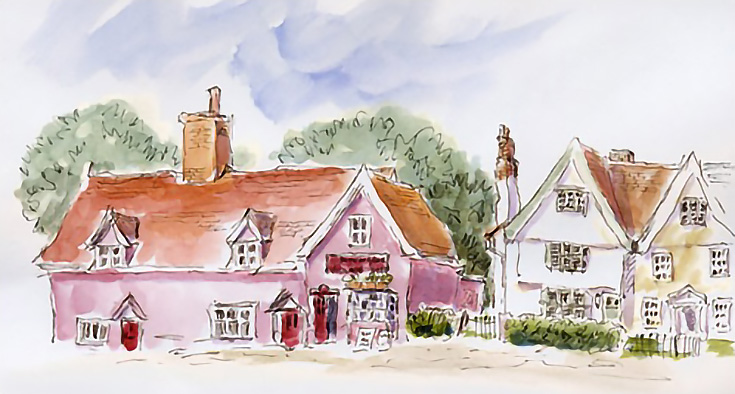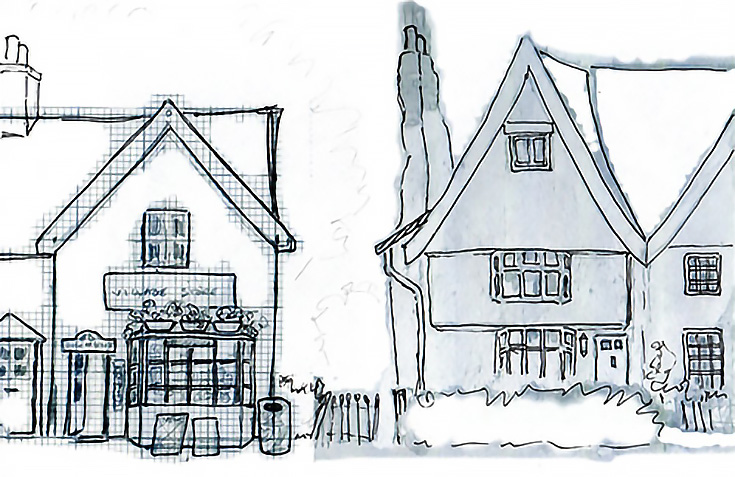The following scene was sketched while on holiday in Suffolk, sitting on the village green overlooking some wonderful wonky houses and a general store with a very low lintel—hence the name of the store and painting, Duck or Grouse Village Store.
Later, for my studio painting, I decided to crop out the far left of the pink building and, with reference to my sketch and a photo, I adjusted the Village Store for a head-on view, but left the cottages as they were.
I enlarged and combined both sections on the computer for my final layout (10” x 6”).
NOTE: My primary medium is watercolour, but I have used an Indian ink and gouache resist technique on a number of occasions over the past few years and find it particularly suitable for depicting old buildings. So that was my choice of medium for this subject.
The computer-aided layout was traced onto stretched watercolour paper, and a variegated base watercolour wash laid down and allowed to dry—this wash enabled me to see more clearly where I was applying the white gouache which followed.
The gouache was carefully painted over the base wash, leaving proposed dark areas and outlines untouched so that the subsequent India ink could sink into the paper. For areas I wanted to keep very light I made sure I applied more than one layer of gouache. I left single-layer applications where I wanted shaded or grey areas in the final piece.
You can see the first areas of white gouache being applied in the image above (note the white tiles on left-hand roof).
The gouache needed to be thoroughly dry before I took a wide flat brush to wash Indian ink quickly and with a light touch over the whole image. A light touch is key. . . too much scrubbing and overlapping of brush strokes at this stage would disturb the gouache layer.
Then, after another period of drying time (to let the ink dry) it was time to put the painting under the tap, still taped to its backing board. With the aid of a stiff brush, the gouache dissolved, removing most of the ink that was painted over it, while the areas untouched by the gouache were clearly defined.
After another patient wait for the work to dry, I assessed the outcome. Because of the drastic nature of this technique, most of the watercolour base had also been washed off, so I began to add more saturated watercolour washes over the top.
Normally I would consider the painting finished after that, but on this particular occasion I realized that I hadn’t applied the gouache thickly enough in a few places which left me with some areas which I considered far too dark.
Rather than abandon the painting after all that effort I opted to try and make the necessary adjustments with some white acrylic and pastel. Fortunately, my alterations blended in well.
While the gouache resist technique is a rather convoluted process (and the reveal after washing off the ink is consistently a surprise—and not always a welcome one!) I quite like the “woodcut” appearance of the final painting.
To see more artwork by Sonia P. Leggett, please visit her blog, Paper, Paint, and Print.
This post may contain affiliate links.





